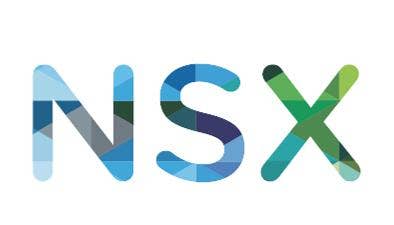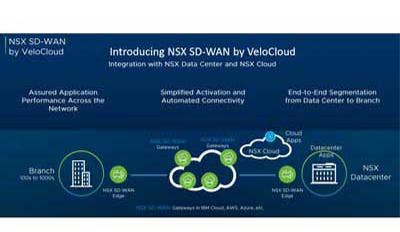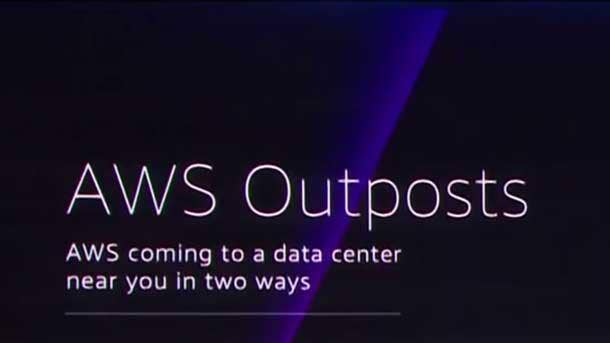VMware’s Tom Gillis On NSX vs. Cisco ACI, And AWS Outposts Future

Tom Gillis On NSX, Cisco, AWS And Channel Momentum
Fresh off another stellar sales quarter, VMware is fired up about the innovation engine around NSX and putting the pressure on its main software-defined networking competitor Cisco.
“Cisco products are really good at hardware switching, at fabric management, but where VMware is really good is at software-defined networking,” said Tom Gillis, senior vice president and general manager for VMware’s Networking and Security business in an interview with CRN.
Gillis is a longtime IT veteran with decades of leadership experience including being the founder and former CEO of enterprise software vendor Bracket Computing, as well as a four-year stint as general manager of Cisco’s Security Technology Group. Gillis talks to CRN about NSX compared to Cisco ACI, VMware’s future in AWS Outposts and how partners should leverage NSX-T.

What is NSX’s differentiation from Cisco ACI?
So the big alternative to NSX is Cisco. Cisco has a very strong position in the market. They have built a switch called the Nexus 9K but it has capability called ACI – application centric infrastructure. What they’re attempting to do is put an agent into the OS and then figure out, ‘This is what the application look likes.’ Then take the traffic that’s flowing between the application and hairpin it out to a switch then back for inspection. Theoretically you can do that. But if you think about that, the whole point of software defined networking is you define it in software. So it’s independent of hardware. When you have software-defined networking that is anchored to an ASIC, it makes it much harder to deploy and operationalize and much more expensive because you have to buy this fancy switch.

So why is VMware’s SDN strategy better than Cisco?
Because our value proposition is, we don’t care what infrastructure you’re using. You don’t need to upgrade a switch, you can use an old [Cisco] Catalyst 6K which has a lot of life in those products or a [Cisco] Nexus switch or an Arista Networks switch or a Juniper Networks switch – or maybe no switch at all. Maybe you’re running workloads off of Amazon. So we can guarantee that a production environment will have internet access but never touch the development environment, and the development environment will never touch the internet.

How to you position NSX versus Cisco ACI?
Let me just say, Cisco is a great company. Many customers use Cisco products and there’s a reason for that. What I always tell customers when they ask me this question, ‘Pick the right tool for the right job.’ Cisco products are really good at hardware switching, at fabric management, but where VMware is really good is at software-defined networking. We are a software company, not a hardware company. Because of our positioning in the stack, we have this inherent knowledge and understanding of what the application is. So our hypervisor is the thing that booted the web server, we booted the app server, we booted the database – so we know exactly where these things live, how they operate and that allows us to enforce that very simple policy of: web-server talks to app-server talks to database. The biggest difference between us and Cisco -- or any other hardware vendor -- is the software focus and the application understanding that allows us to simplify policy enforcement across every form of infrastructure.

Talk about the importance of VMware’s NSX strategy inside Amazon Outposts in terms of channel partners?
We announced in December a deep partnership with Amazon to deliver Outposts, which is Amazon’s hardware stack that runs in a customer’s data center. It will run either a vSphere software environment or the native [AWS] EC2 environment. For a channel partner that’s been used to selling hardware and integrated it into a data center, that looks like somewhat of a competitive threat. All of a sudden that need is diminished, but we built NSX into these Amazon Outposts offerings. We see an opportunity for the channel partner to help use NSX to tie these advanced hybrid cloud offerings into an enterprise network. That’s going to be a good business. As the market moves to these engineered systems, where you have a complete hardware-software combination, there’s still an opportunity and need to integrate into the larger environment. I think a bunch of channel partners are going to make a bunch of money doing that.

If a channel partner is looking for a cloud opportunity, where can NSX help?
We are enabling partners to run their own clouds. The biggest of them is probably IBM, but there are hundreds of folks that have built their own. Think of [NSX] as a next-generation hosting service where you’re running cloud services on behalf of the customer and the VMware platform is purpose-built for that. In our new NSX-T [Data Center 2.4] release, we’ve introduced a host of features we called Cloud Scale -- things that allow NSX to run faster, smarter and in a service provider environment. Things like IPV6 (Internet Protocol version 6) support and hardware acceleration for performance using Intel’s DPDK (Data Plane Development Kit), a feature that allows us to achieve greater throughput.

Why should partners double down on the new NSX-T?
The big deal for channel partners is taking advantage of this new automation and building it into the customer’s continuous integration and continuous delivery pipeline. Modern cloud-based application developers have gotten to the point where everything is automated, you can deploy workloads with a single push. Having the networking piece be treated as software instead of a collection of boxes where someone has to log in, make changes, update this and open a ticket – that was the only way of doing it. With NSX, the network is now code. That is a very powerful thing. Channel partners can help customers understand that code, build it into their workflow and software-development processes and achieve that public cloud experience in their own environment.

Talk about NSX channel momentum?
We have nearly 10,000 customers using our virtual networking product, including 82 of Fortune 100 who have adopted NSX. We’re over $1 billion in bookings. As we grow, customers will buy NSX and we need our channel partners to help customers operationalize it. It’s great opportunity for the channel. We need these channel partners to make it consumable for every enterprise customer. We’re leading deals, then we’ll bring in channel partners to help with the deployment which is a fantastic entry point for the channel partner where they can upsell. … The end goal is where trying to allow customers a public cloud experience where a developer can launch a workload with a single click and it just works, and all of the complexity of policy enforcement and connectivity all happens in the software. So It’s a very powerful value proposition to partners for their customers.